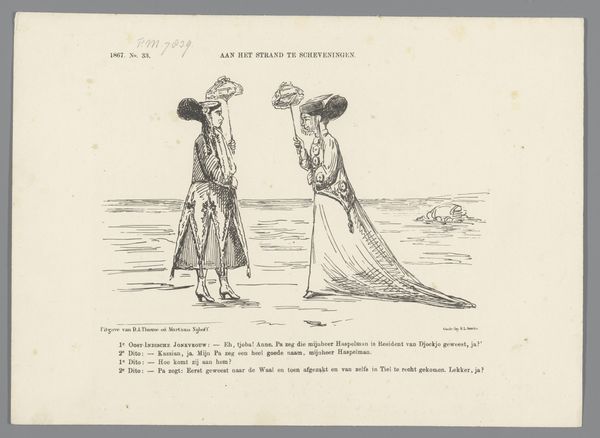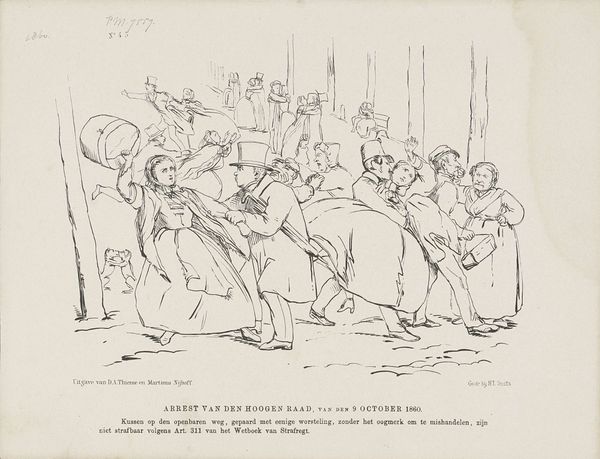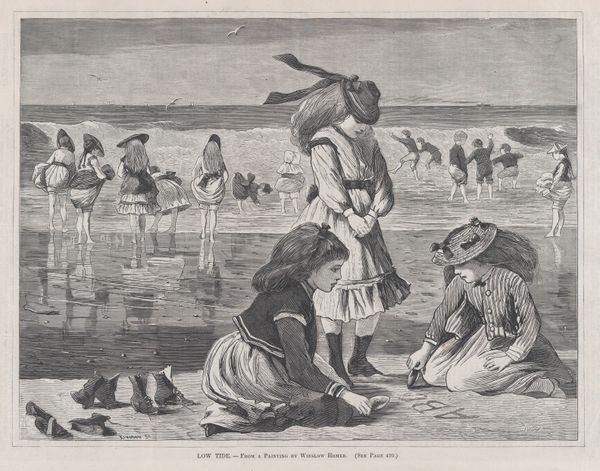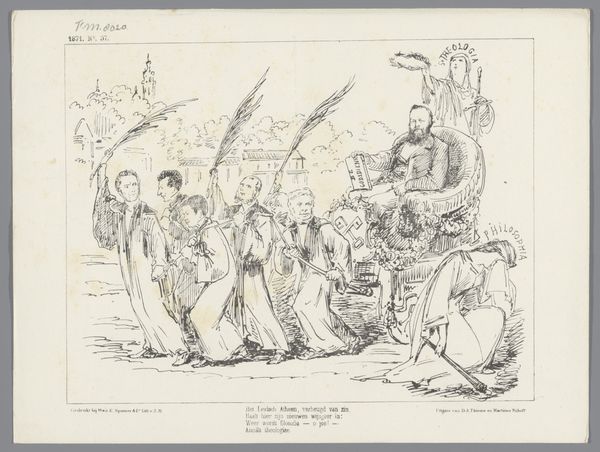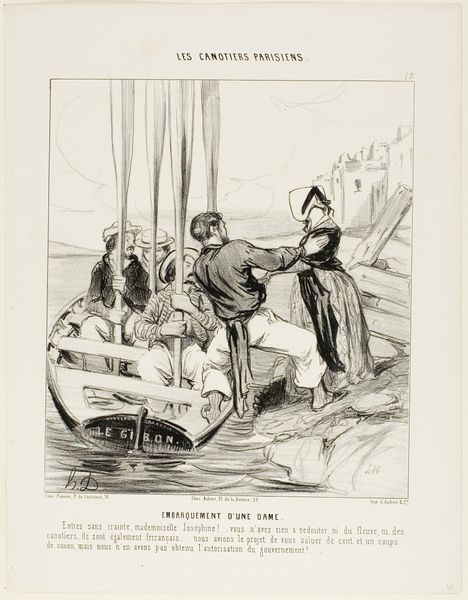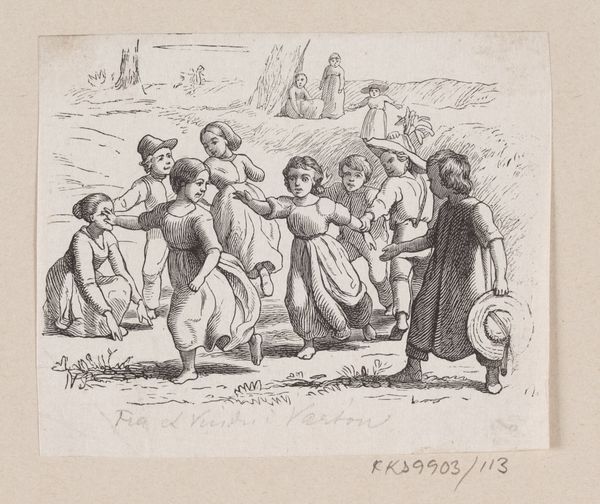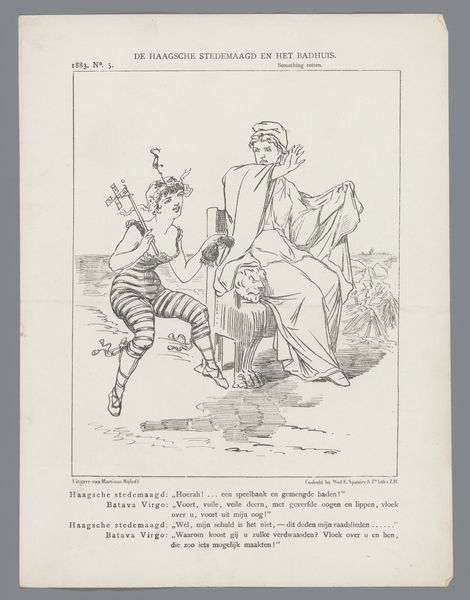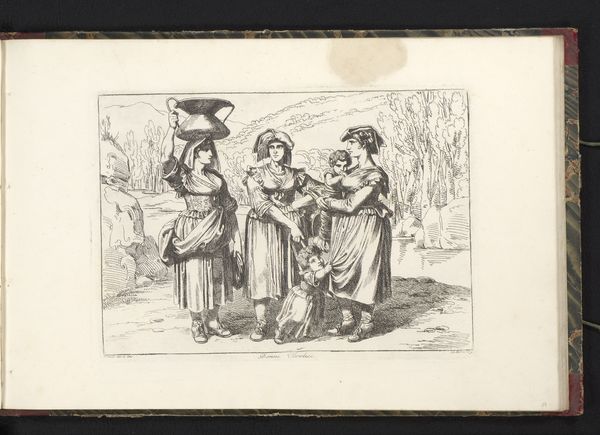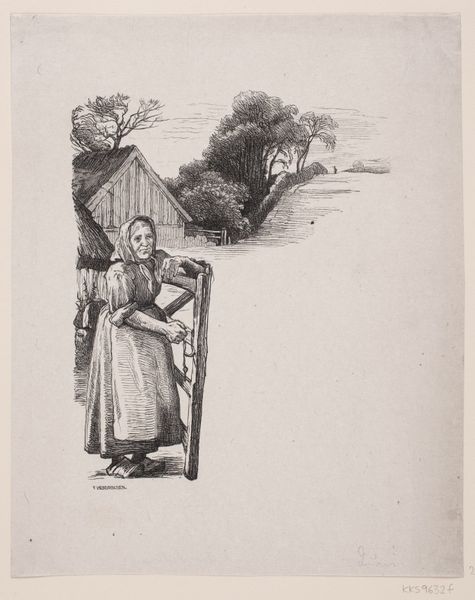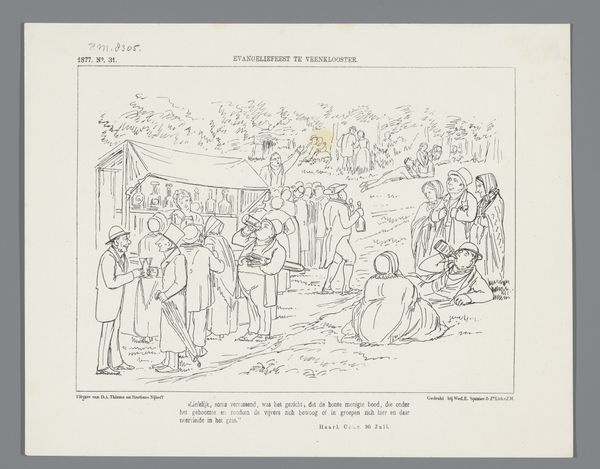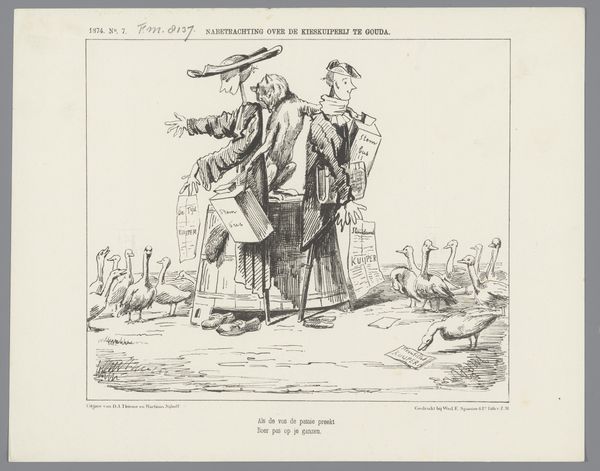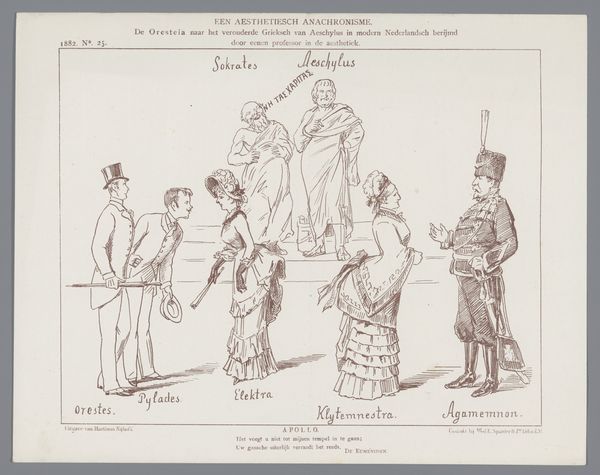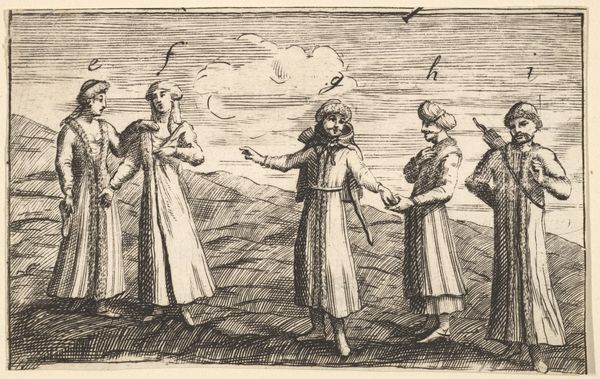
Dimensions: height 215 mm, width 275 mm
Copyright: Rijks Museum: Open Domain
Curator: This is an engraving from 1886 titled "Spotprent met het nieuwe Flevoland", or "Cartoon with the new Flevoland" by Johan Michaël Schmidt Crans. The medium is listed as both drawing and print. Editor: It's interesting; my immediate sense is one of cautious optimism. The image feels heavily allegorical, and despite the slightly drab palette imposed by the engraving process, there is something hopeful in the gestures of welcome. Curator: Indeed. It was made during the period of Zuiderzee reclamation projects in the Netherlands, a massive engineering endeavor transforming the inland sea into land. The group of women, all figures of Dutch provinces identifiable through the shields decorating their dresses, beckon toward a figure rising from the waves. Editor: Ah, that's the mermaid! She must be Flevoland, then, rising like a new Aphrodite from the sea foam! Note her hesitant but hopeful expression; a visual encapsulation of that tumultuous relationship between humankind and nature. Curator: Precisely. These reclamation projects were imbued with romantic nationalist fervor. They represented not just physical expansion but also national progress, an almost mythological "conquest" of nature that echoes throughout the symbolic register in fin-de-siècle Europe. Editor: The provinces wear stern expressions, as though acutely aware of the sheer work and struggle involved. But Flevoland also is assisted by some creature beneath her - maybe it alludes to forces of nature at once challenged, but still providing. It complicates the triumphant narrative, wouldn’t you say? Curator: Definitely. Looking closely, we notice that some aspects appear less sanitized: small mechanical details included from that era imply the degree of human endeavor involved in its realization, disrupting that mythological undertone, or even working in contrast with it. Editor: It reveals much of the latent social history concerning Dutch territorial transformation and nationalism from that moment, an ambiguous representation to ponder, still so compelling nowadays! Curator: Well said. I find myself pondering, too, the contemporary parallels with our continued efforts to reshape the environment. It makes us reassess what such enterprises signify regarding progress. Editor: Agreed. I depart with an even deeper consideration of art’s power to weave political thought into popular visual expression and national consciousness.
Comments
No comments
Be the first to comment and join the conversation on the ultimate creative platform.
